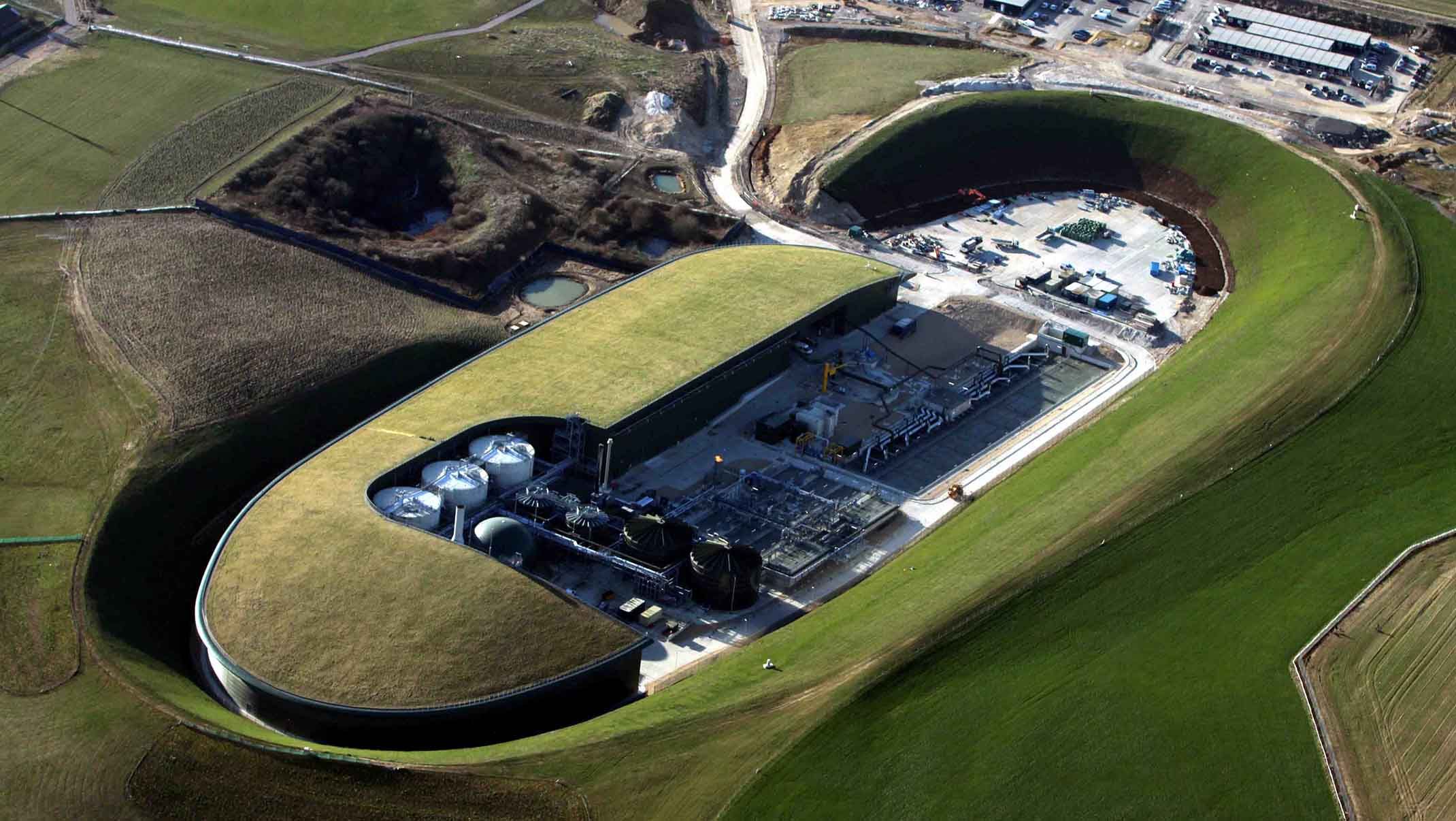
Brighton & Hove WwTW Scheme
Stantec worked collaboratively with Southern Water to deliver major environmental improvements at Brighton and Hove Wastewater Treatment Works in Peacehaven, East Sussex, UK. The Works treats the 95 million litres of wastewater generated each day to required European standards. The treated effluent is returned to the environment 2.5 kilometres off-shore.
Stantec designed the wastewater treatment works, Marine Drive pumping station, and Portobello pumping station. We were also responsible for the detailed design of the civil, architectural, and reinforced concrete works, the pumping station superstructures on the sewerage system, and the local sewer connections.
Environmental impact was a key focus in the planning approval process. Additionally, odour, noise, and visual impact were three main considerations. Stantec ensured that it took all environmental requirements into account when carrying out the detail design, working in collaboration with multiple designers and contractors who carried out assessments in the planning phase of the scheme.
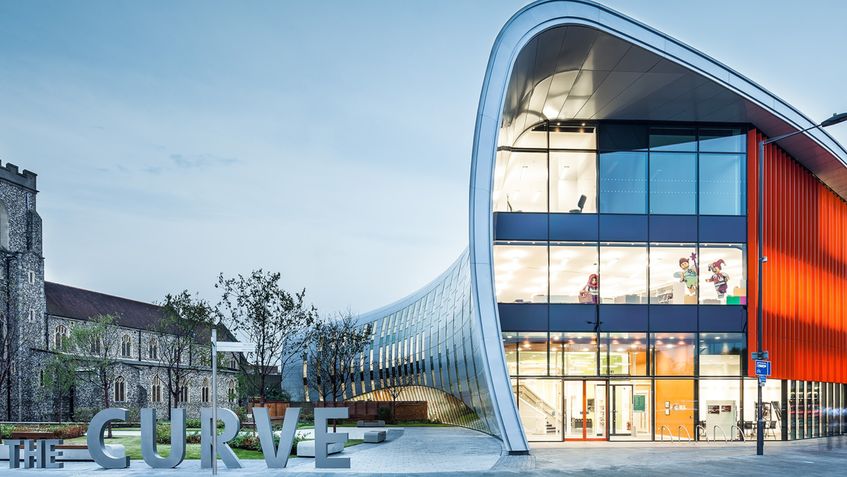
The Curve, Slough
The Curve Library and Cultural Centre is part of a major regeneration effort of Slough Town Centre. The £17 million building provides a three-storey space for a new central library, as well as performance and teaching spaces, offices, and a cafe. The building is the centrepiece of the ‘Heart of Slough’ regeneration scheme opened in September 2016.
We carried out Level 2 Building Information Modelling (BIM) on the project for the structural and mechanical, electrical, and plumbing (MEP) design, in conjunction with architects BBlur and CZWG. The architect’s concept, which received planning permission in 2010, creates a building as a flared accommodation tube with welcoming, fully glazed entry facades on the east and west—these open onto two new public squares, created at each end of the building.
These public spaces anchor the building in the heart of the town centre, providing safe external space for use by the building. The building achieves a BREEAM ‘Very Good’ score using photovoltaic panels on the roof and with an embodied carbon footprint reduction of 600 tonnes of carbon dioxide compared to the original scheme.
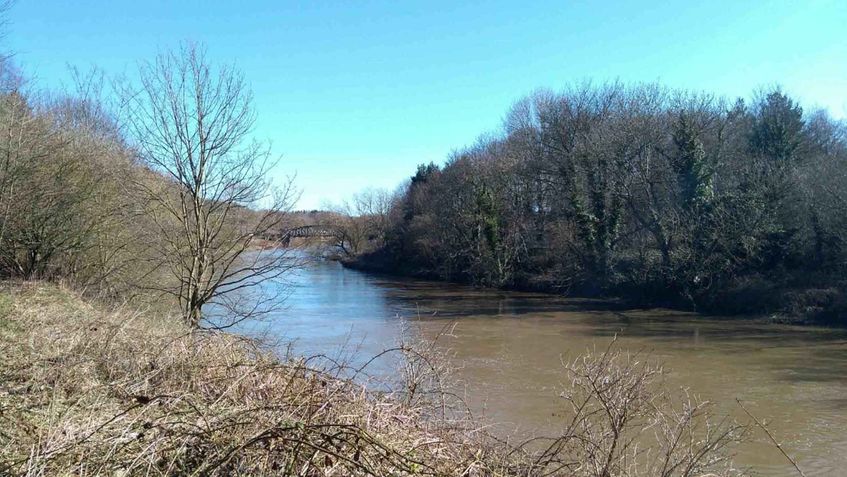
Sunderland Core Strategy and Development Plan (CSDP)
In 2016 we were appointed to undertake the SA of the emerging Sunderland Core Strategy & Development Plan, which will steer development in Sunderland up to 2033. Our work involved providing critical friend support, assessing proposed policies and site allocations, and preparing robust SA reports to accompany iterative versions of the emerging plan.
Working closely with Sunderland City Council we adopted a collaborative methodology and focused on identifying and addressing likely significant environmental and wider sustainability effects at each stage of plan preparation.
Building upon our SA site assessments we also prepared exceptional circumstances and green belt review reports to support the sustainable release of specific sites from the Tyne & Wear Green Belt. As well as helping Sunderland City Council to meet identified housing needs, this will underpin a new growth-orientated spatial strategy for Sunderland.
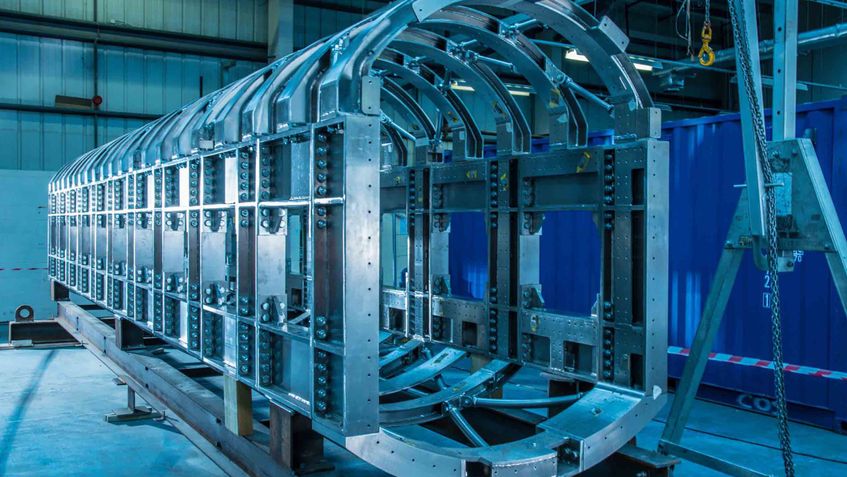
King’s Scholars Pond Sewer Rehabilitation
The KSP Sewer, buried beneath one of the busiest intersections in London, and above one of London Underground’s live tunnels, was found to be showing significant distress during a routine inspection. In addition to severe deterioration, the 170-year-old structure was found to have settled by 166mm from the original constructed level thereby encroaching into the kinematic envelope of the trains below.
The KSP sewer was built between 1848-1856, seven years before the first section of the London Underground. The two structures intersect near Baker Street tube station. At this location, the sewer is supported by a bridge structure spanning between the walls of the underground tunnel. Closing the tube line to repair the sewer from below would be extremely expensive whilst closing the busy road intersection to repair from above would cause major disruption to the public.
Our team worked closely with Thames Water and Stakeholders to develop an innovative solution to extend the asset life of the sewer structure by 120 years. The team’s solution involved strengthening the sewer from the inside, eliminating all disruption to the public.

AMP6 Restoring Sustainable Abstraction Programme
For AMP6, the Environment Agency, as part of the National Environment Programme (NEP) identified sites where South Staffordshire Water had to deliver schemes or investigations related to the effects of abstraction on stream flows, wetlands and the associated aquatic ecology across both the Staffordshire and Cambridge supply.
These investigations focused on local, ‘reach scale’, issues, or assessed whether the abstractions were a limiting factor in the achievement of Good status of waterbodies (typically sub-catchment scale) under the Water Framework Directive (WFD).
Many of the sites within the AMP6 programme had impact assessments undertaken during AMP5, although it was acknowledged that these were underpinned on relatively limited site-specific environmental datasets. Work undertaken by Stantec and our partner APEM during AMP6 involved resolving residual uncertainties and identifying cost-effective and environmental outcome focused solutions.
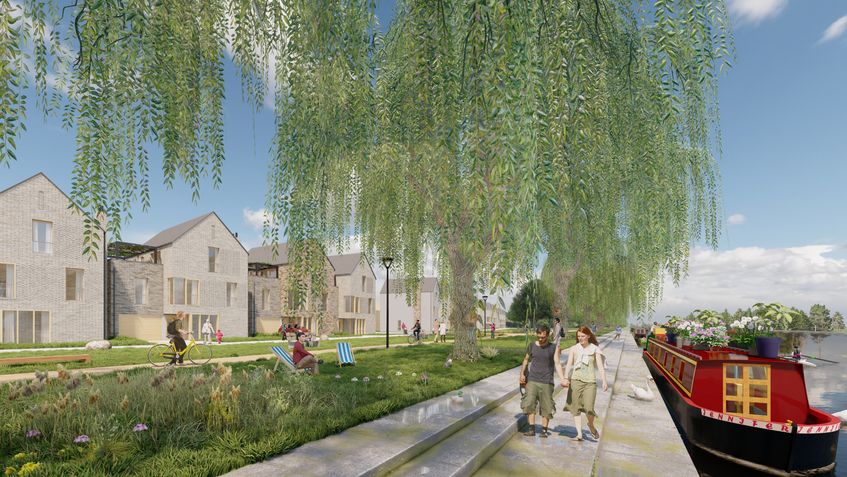
Peterborough Embankment
A seemingly forgotten riverside embankment area along the River Nene, Peterborough Embankment provides a green area close to Peterborough’s city centre and cathedral. Peterborough City Council wanted to transform the embankment into a new city gateway and destination for area residents, so they reached out to us.
Leading this once-in-a-generation riverside transformation, our integrated team of planners, designers, and engineers delivered a community-focused masterplan. Peterborough Embankment will play an important role in people’s lives, so the team engaged with the community, council, and key stakeholders to learn their vision for the area.
Building trusted relationships with key stakeholders helped us overcome challenges at the site and develop an adaptable framework of proposals—and allowed individual proposals to be delivered in isolation, speeding up development.
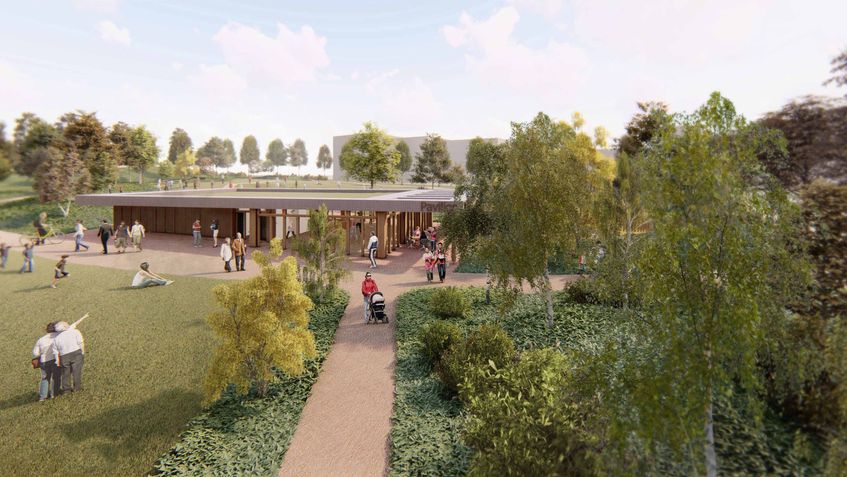
Springfield Village
With an urban and landscape design centred on physical and mental health, Springfield Village aspires to break down the stigma faced by those struggling with mental health. As a member of the Sir Robert McAlpine design team, we led the landscape-focused regeneration on the grounds of Springfield University Hospital into a new community.
Our landscape design carefully considered the environmental impacts of materials. Demolition materials have been reused where possible and incorporated within the community. Old hospital bricks comprise the new 4,000-seat amphitheatre that helps entertain and connect the community.
Green walls, roofs, trees, and shrubs bring residents closer to nature. Through close collaboration with the local council and wider design team, we were able to preserve trees and the existing landscape, boosting the overall biodiversity of the site, benefitting residents and wildlife in the area.
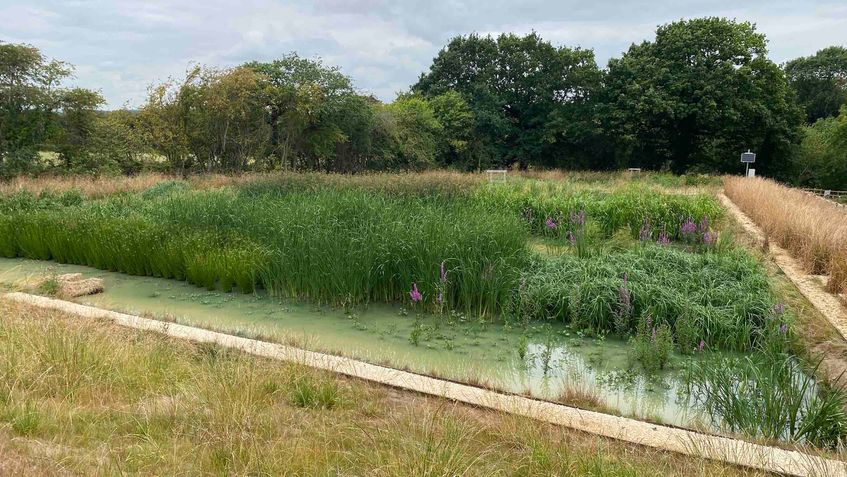
Clifton Integrated Constructed Wetland
Clifton Wastewater Treatment Works is a rural treatment plant that recycles wastewater generated from a small village in South Yorkshire. To meet new water quality objectives, additional infrastructure was required to reduce nutrient load to the environment.
We identified that the existing treatment site provided the perfect conditions for implementing an integrated constructed wetland (ICW): a low energy and environmentally friendly method of wastewater treatment. The site area was proportionally large for the treatment population (about three Olympic swimming pools), with a natural slope and impermeable clay layer—all ideal conditions for supporting a nature-based solution.
The shallow ponds were filled with a variety of plants (25 species), some to promote ecological conditions for nutrient uptake and some to promote a diverse habitat. In total, 24,000 plants were used, delivering a biodiversity net gain of 40%—one of the first biodiversity net gain positive wastewater treatment works in the UK.
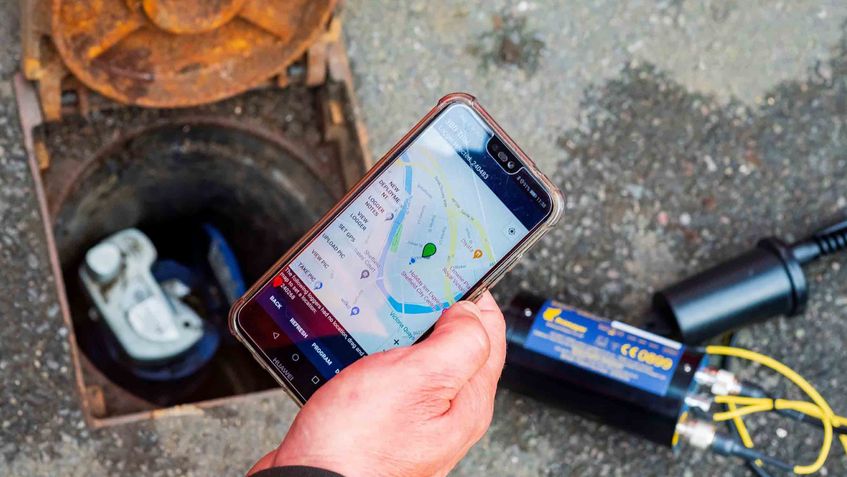
Hadfield Smart Water Network Pilot
Yorkshire Water, working in collaboration with Stantec and other stakeholders, has created the UK's first ever smart water network. It incorporates a real-time informed hydraulic digital twin that works to further improve the essential water supply service provided to the community of Sheffield.
Utilising state-of-the-art digital twin technologies, digital water meters, sensors, advanced analytics, and telecommunications channels, the pilot will revolutionise the way Yorkshire Water manages leaks and interruptions to supply in the future.
Through integrating almost 4,000 live data streams across an area covering over 20,000 properties in Hadfield, West Sheffield, the model enables simulated impact assessments and improved customer awareness. As a result, analysts in Yorkshire Water can prioritise repairs instantly, enabling leaks to be repaired quicker and reducing water lost.
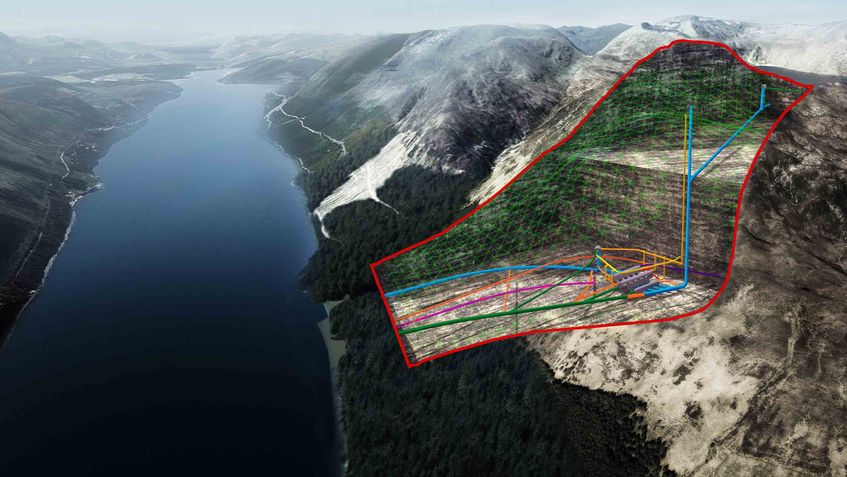
Coire Glas Pumped Storage
Pumped storage is often referred to as a large “water battery.” It can harness renewable onshore and offshore wind, or solar, or nigh time nuclear energy produced during favourable conditions to pump water from a low reservoir to a higher one, then when other renewables are unavailable, release it back to the lower reservoir. This water flows quickly provides large power generation capacity, on demand—and it’s carbon free clean energy.
We helped SSE Renewables design and prepare for the implementation of major renewable energy project Coire Glas, a 1,296 megawatt pumped storage hydropower scheme - the first major pumped storage scheme to be built in the UK in over forty years.
The project is sited in the Great Glen of Scotland, an environmentally sensitive location. As a result, a large focus of our work has been supporting the business case with socio-economic information, including 3D landscape and visual impact assessments for stakeholder meetings.

Berwick Bank Wind Farm
With 4.1-gigawatt capacity, Berwick Bank Wind Farm is one of the largest offshore wind opportunities in development in the world, and a key part of meeting United Kingdom Government’s offshore wind ambitions.
We were brought on to provide engineering design for the cable routes and onshore converter station, enabling power generated offshore to connect to the National Grid distribution network. To be sensitive to local constraints, our work explored multiple routing options for the cables. It included developing conceptual layouts of the converter station designed to minimise the need to export surplus materials while maximising sustainable drainage opportunities.
When complete, identifying and confirming the optimum grid connections will enable Berwick Bank to supply enough renewable energy to power Scotland’s households twice over.

Otterpool Park
Otterpool Park will be a new garden town centred around the historic Westenhanger Castle near Hythe. The site, which offers excellent transport connectivity and benefits from having its own train station, will provide a community of up to 8,500 homes, 9,000 jobs, primary and secondary schools, medical and leisure facilities and premises for retail and businesses.
Otterpool Park LLP, the project’s master developer, engaged Stantec to design and manage the first phase of infrastructure on this complex project, which will be delivered over the first four years of this 30-year development project.
Working with a team of specialists and stakeholders, Stantec are providing engineering design and environmental services. Stantec’s services will also include managing the design of roads, drainage, earthworks, heritage, utilities, and environmental mitigation necessary to get the development at Otterpool Park Garden Town underway.